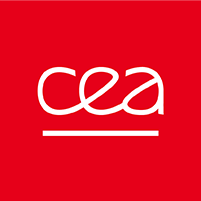- Project in progress
- CEA-SI-2020-004
Building the quantum computer, bit by bit
David HERRERA
“Quantum computing is at the intersection of several disciplines. It requires an understanding of chemistry, physics, mathematics, computation theories, and computational complexity. The CEA is the ideal place for this. Quantum computing allows us to ask us questions about the knowability of what is around us, and there is great philosophical value in that.”
Echoing the massive uptick in quantum R&D spending by tech-industry giants, the French government just earmarked €800 million in funding for quantum computing research. So, yes, research is intensifying, though the idea of a fully operational quantum computer is still relatively far over the horizon.
A Science Impulse fellowship has brought David Herrera to Grenoble, where he will work with scientists and engineers at CEA-Leti and CEA-List to tackle some of the technological hurdles that stand between us and the quantum computer.
During the next three years, he will focus both on spin quantum (qubit) processor design, and on the software engineering that will be required to run a quantum computer some day. This hardware-plus-software approach should shed new light on the quantum advantage for combinational optimization, machine learning, and other scenarios.
The classical vs. the quantum computer
The “normal” computers we are familiar with operate sequentially, handling information in the form of 0s and 1s. From an electrical standpoint, it is simple to visualize an open or closed circuit generating a bit. A classical bit can only have a value of 0 or 1, and can only have one value at a time. Bits are manipulated with the use of logic gates, which allow elementary operations to be carried out.
By contrast, a quantum bit, or qubit, can be in a superposition of two distinct quantum states, written |0> and |1>. A quantum bit is manipulated with the use of quantum gates. Quantum entanglement (superpositions of two states), which derived from quantum superposition, yields various kinds of quantum advantages, and promises extremely fast execution.
A short history
The motivation to build a quantum computer goes back to the end of the 20th century, with the idea of simulating quantum systems themselves. Using classical computers to simulate quantum systems requires a great deal of memory, and is beyond the capacity of even the most powerful machines. Quantum coherence (the stable entanglement of a potentially infinite number of quantum states) began to attract attention, including for applications outside of the quantum field, in resolving certain algorithms. These include Shor’s algorithm (factorization of integers in prime numbers) and Grover’s algorithm, which is used to speed searches of unstructured databases.
The ideal quantum computer would use many “perfect” qubits capable of remaining coherent for a very long time while algorithms are executing. Currently, however, qubits are somewhat unstable over time (a phenomenon called—you guessed it—decoherence) and generate errors. Especially since 2014, application-specific quantum research has focused on achieving a calculating advantage over classical computers, without too much concern about noise. Eventually, using many qubits will lead to the introduction of error-correcting algorithms, which will in turn enable quantum coherence, for quantum computers capable of performing arbitrarily long computations.
The state of the art today, and David Herrera’s research
CEA labs are exploring several qubit design paths. The CEA campus in Grenoble, a global center of excellence for the semiconductor industry, is working mainly on silicon-based transistors, whereas the CEA campus in Saclay is delving into superconductors and other technologies. While research on algorithms is quite advanced, no single architecture has emerged victorious—at least not yet. The ones that have been studied so far are all expensive and complicated to implement. And they only work at temperatures close to absolute zero (less than 1 degree Kelvin). The qubits in CEA labs in Grenoble are immersed in unwieldy and expensive lab machines called cryostats to keep them cool.
Herrera’s work will focus on quantum gates, which he will try to segment to solve small problems and generate subunits using a NISQ architecture quantum routine that will be implemented in a machine learning scenario. This research should eventually produce a quantum advantage.
He will also be working with the CEA laboratories studying the control of qubits through relatively critical measurement and control electronics built on conventional architectures. These chips will be immersed in the cryostats with the qubits. And, as with any new component, low power is always a priority. Another complex problem that will have to be solved to improve the measurement and control loop is how to best send data about what is happening inside the cryostat to the equipment outside. Measurements of some of the qubits can be used to estimate noise and system drift and introduce corrections. If there were enough qubits, this approach could stabilize the system indefinitely.
Quantum computing could one day be used to simulate chemical processes or to screen chemicals in pharmaceutical drug discovery research. It could also help allocate limited resources. Think package delivery. A driver can take many possible routes, but which one is the most efficient? This type of problem is tough to solve. A quantum machine could quickly test all possible routes. It’s worth noting that quantum heuristics running on chips without error correction can find acceptable solutions, but never the optimal one.
There has not yet been a demonstration of a quantum computer that can run algorithms more efficiently than a classical computer. But we are getting closer.
What philosophy has to do with all this
With all the talk of someday being able to calculate and simulate everything, it is only natural to turn to mathematics, algebra, chemistry, and physics for answers. But the epistemological dimension always comes up. Quantum computing lies at the intersection of a number of very different disciplines, and philosophy is just one of the lenses we can choose to look through. If we could understand everything happening in the world around us—and that’s not saying we ever will—would it even be a good thing? This is one question that gets Herrera excited. Do we have to know everything? His opinion is that the quantum computer will help us ask questions about the calculability of what surrounds us.
Who is David Herrera?
Herrera studied physics and, later, telecommunications science at the University of Valencia, Spain, where he first encountered high-level physics. He earned his PhD at Imperial College London, then worked as a researcher in error-correcting codes, first in Singapore, then Israel. He brought this experience to Grenoble, France, where he joined the Institut Néel (CNRS), focusing on thermodynamics and quantum control.
He then moved to the private sector, where he gained experience with machine learning before taking a position at Atos as a support expert assigned to businesses and research groups purchasing qubit simulation machines for quantum application prototyping, among other things.
The Science Impulse challenge to come to the CEA to “imagine the architecture of the quantum computer of the future” was a pull too strong to resist, and Herrera’s proposal won him the fellowship.
His interest in physics—and science in general—was awakened early. When he read a children’s book about the planets at around age 10. He claims not to have understood much of the book, but the analogies it used left a lasting impression. (If an atom is a soccer ball in the middle of a stadium, then an electron is a fly that is flying around it outside the stadium. Which means that matter consists of a great deal of empty space.) Later, he once spent some pocket money his grandmother had given him on a book…by Stephen Hawking.
Herrera didn’t wind up doing astrophysics, but nonetheless argues that black holes are organized like quantum computers.
Hélène Champetier-Gusella/Sara Freitas




